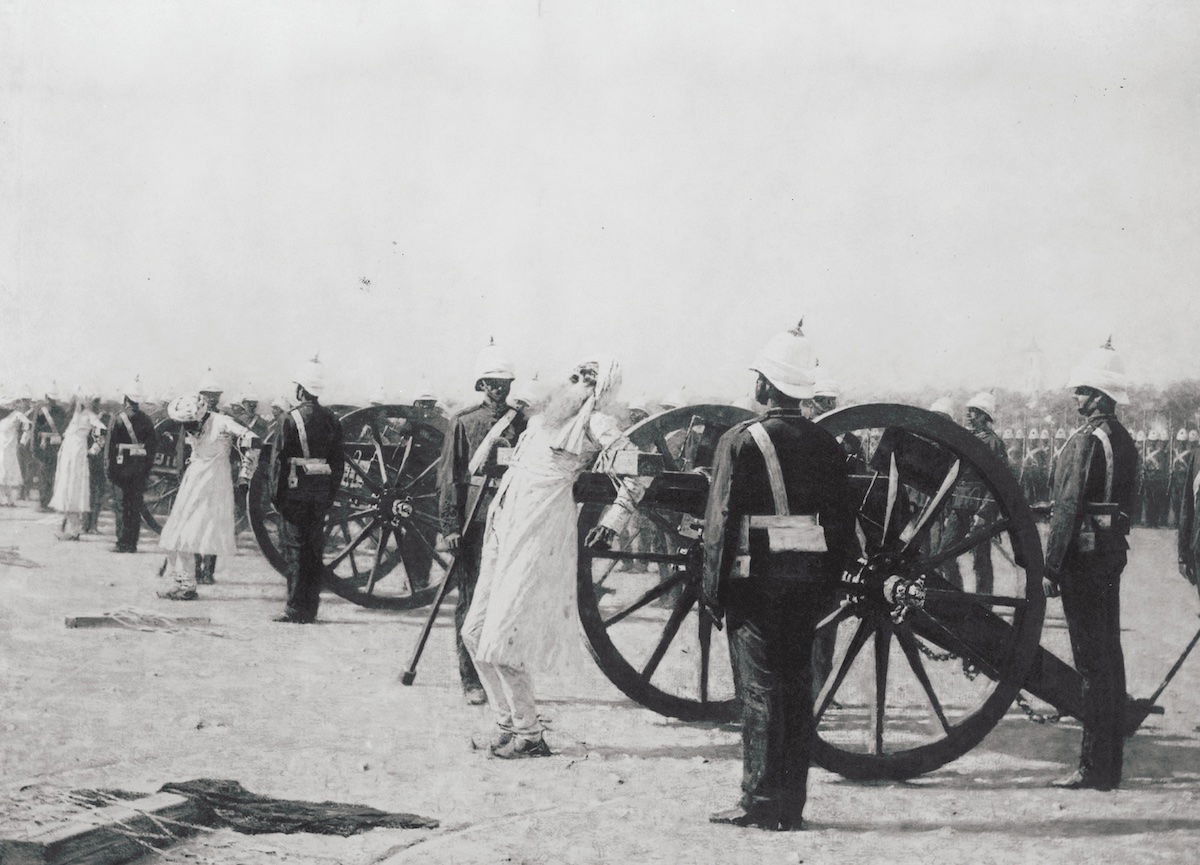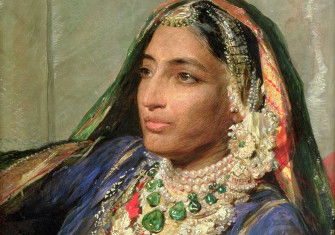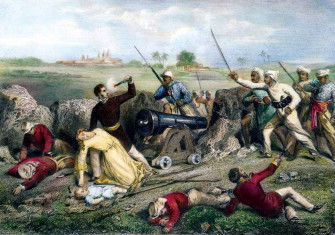India’s Kuka Revolt Ends in Death
On 17 January 1872, 49 Namdhari Sikhs – dubbed ‘Kukas’ by the British – were executed by cannon, supposedly for spreading insurrection.

Was it even a revolt? Afterwards, there were doubts. But in January 1872 the British Empire’s man in Punjab, deputy commissioner John Lambert Cowan, was sure.
There had been unrest among the minority Namdhari Sikh population – ‘Kukas’, the British called them – in what was a Muslim region. Some 200 Namdhari had rampaged through a neighbouring province. On 14 January they tried a night raid on the fort at Malodh. The next morning, they attempted to take the town of Malerkotla. Both efforts failed. Some Namdhari were killed, many were wounded. The rest surrendered or fled.
‘Tranquility restored’, Cowan telegraphed, arriving on the 17th. But towards sunset that day he ordered 49 of the captured Namdhari to be strapped backwards over cannon muzzles on the Malerkotla parade ground. A bugler sounded the command and they were blown to pieces – a technique learned from the Mughals and infamously deployed during the 1857 ‘mutiny’.
‘I acted from no vain motive, or from cruelty, or a desire to display authority’, Cowan wrote. ‘The punishment … was imperatively necessary to prevent the spread of an insurrection.’ But that insurrection had already been suppressed. Many of those executed were already badly wounded.
Cowan was dismissed. He had ignored orders to keep the men in custody. Further orders had arrived, mid-execution. Avoid ‘any hasty act’, they said.






